Project Description
Blockchain-Based App Brings Green Energy Win to Providers and Consumers
Scalable platform allows consumers to sell excess energy back to the grid
Scalable transactive energy platform brings the power of blockchain, microservices, and predictive analytics to consumers and providers in a user-friendly mobile and web application. Consumers can sell energy back to the grid and participate in other energy-saving initiatives for incentives of their choice. Competitors benefit from crowdsourced energy load-balancing without jeopardizing brand privacy.
Share this
The Challenge
To create a scalable platform that allows consumers to sell excess energy back to the grid and participate in crowdsourced energy load-balancing.
The Result
The intuitive mobile and web application harnesses the power of blockchain, microservices, and predictive analytics to provide both consumers and providers an excellent user experience.
Features & Highlights
Multiple integration points
with other applications to allow for energy control and validation
Highly scalable
for future market services (thanks to microservice architecture)
Predictive analytics
help prepare for better demand response
Collaborative
Shared yet private exchange of data allows competitors to work together and benefit thanks to blockchain platform
The Challenge
Traditionally, energy was fully centralized, so power was distributed and managed by a central model from which energy was generated, such as gas turbines, nuclear plants, or coal plants. With the advent of renewables, consumer-produced energy (e.g. solar panels), and changes in consumption (e.g. electric cars), energy can now be distributed and crowdsourced. To support these advancements, an efficient way to track redistribution and reward participants was required.
Our client, the second largest municipality-owned utilities company in North America, sought to design, develop, test, and deploy a transactive energy platform.
The purpose of the enterprise platform is to connect grid operators with residential users and third-party integration partners for grid control and validation. This connectivity allows customers to receive energy from distributed energy resources that in turn reduce strain on the power grids, reduce the need for added infrastructure, and consequently reward residential users for their participation in selling back excess energy to the grid. The client wanted to offer residential users incentives for this crowdsourced energy exchange beyond typical energy credits.
Blockchain technology was selected by the client for the trust it imparted on the entire exchange network. In this case, the client sought to track information from utilities, grid operator controlling management processes, and payment gateways in a way that could be captured without dispute.*
In addition to creating the technology to power the platform, the client also required a mobile and web application to be used by end customers, and dashboards to be used by wholesalers and distributors.
Chateaux was selected for this project due to proven expertise in blockchain (including Hyperledger), emerging technology, cloud computing (including MS Azure), and application development, as well as experience with clients in the energy sector.
*By using blockchain technology, business logic and smart contracts built on a private, permissioned enterprise blockchain allow users to interact only in the way the system has been created for that blockchain, so unilateral changes cannot be made by one party. (If a change is requested, it can only be made if a consensus agrees to the change.) By trusting in data that is transacted amongst each party, there is less friction between parties and collaboration can be beneficial to all.
The Approach
In the Proof of Concept (POC) phase, an iteration of the platform was built by another vendor that, while sufficient, had architecture limitations that restricted its ability to scale to new markets in the future.
Because the client was already a Microsoft customer, Chateaux and the client decided that the pilot platform would be rebuilt using open source Hyperledger Fabric installed in Microsoft Azure. This ensured the new platform would be cost-effective, not require new SaaS-based licenses, and would make updates easier to manage within their existing Microsoft license.
The need for multiple integration points and desire for future scalability made microservices the architecture of choice. MongoDB, Docker containers, and Azure Kubernetes were used to achieve these results.
Chateaux also addressed how customers would be provided with incentives for selling back energy to the grid, such as unused solar power, or taking certain actions, such as plugging in electric cars at designated times to help load-balance the grid. To achieve this, third-party integration partners, including a metering agent and control agent, were integrated to control the energy to residences and validate that residential customers met contractual obligations needed to be rewarded for their participation. Next, reward tokens and Stripe, a payment processing platform, were integrated. Residential users could be incentivized with reward tokens, which act as reward points to be used at retail shops, or monetary reimbursement paid via Stripe.
Using Agile Scrum Methodology, Chateaux started with an initial Design phase followed by Build and Test sprints up until 2020, where the team refocused to a Kanban-based approach for the final push of development. Overall, Chateaux worked with the client to create solution architecture and application design; provide infrastructure design and implementation; audit operational framework; and create the Network Members’ Web App and End-Users’ Web & Mobile App. Financial settlement microservices, master data load, data quality, analytics data feed, and QA services were also rendered along with external API integration.
The Result
With the transactive energy platform, consumers can now sell energy back to the grid and participate in other energy-saving initiatives. For instance, residential consumers with solar panels that produce more energy than they can use now have the ability to easily sell that excess to high demand grids. By integrating directly into the grid network, this transaction can be easily tracked, and participants can be incentivized through reward tokens or Stripe reimbursement. The blockchain platform allows participants in the business network, such as contract counterparties, to transparently participate in the energy contract bidding process alongside competitors without compromising their brand’s privacy. Finally, predictive analytics allow providers to track and manage demand response.
To enable this process and prime the platform for future scalability, Chateaux successfully leveraged microservice architecture to build and develop the following applications:
Network (Platform) Operator Web Application: an application used by small number of operators that will have full transparency to the system, blockchain behavior, transactive energy platform performance, and metrics.
Market Operator Web Application: an aggregator to create Quotes for Market Services where many Contract Counterparties will submit responses similar to bids for selling energy from their residential user customers to market operators.
Contract Counterparty Web Application: a middleman that gets quotes from Market Operator and sends quotes to Residential Users who are customers of the Contract Counterparty/Utility company.
Residential User Web and Mobile Application: an application used to get quotes from Contract Counterparties that residential users can opt into, participate in, and be rewarded either monetarily or from reward tokens for their participation. Devices include Electric Vehicle for the EV Market Service, Solar Panels for reducing Green House Gas emissions, and Battery with solar energy for reducing the grid strain for Demand Response market service.
The architecture and build of the product are highly scalable to accept new market services in the future and can be further scaled to integrate with energy providers and wholesalers globally.
About the Client
Our client is the second largest municipality-owned utilities company in North America, serving approximately 1M residences and businesses across an 1,800 square kilometer service territory comprising seventeen communities across Canada. The company actively seeks new possibilities in energy conservation as well as new technologies to enhance quality of life for their customers.





